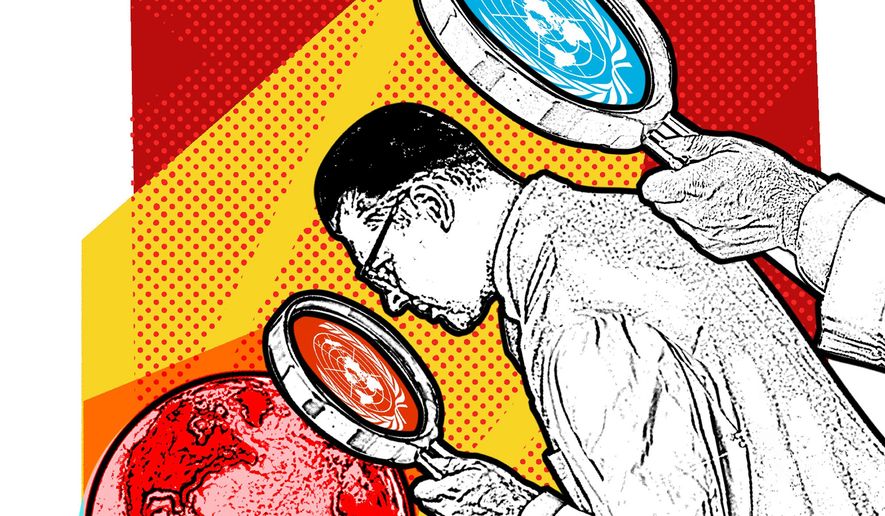OPINION:
COP27 began on Sunday and I’m following the action. By action, I mean 12 days of mind-numbing meetings, speeches, and virtue signaling, spiced up with misrepresentations of scientific research and data.
COP stands for Conference of the Parties. The parties in question do not feature beer, dancing, and flirting. The term refers to the 197 governments that began getting together back in 1992 for United Nations “climate summits.” This COP, the 27th, is taking place in Sharm el-Sheik, a posh Egyptian resort on the Red Sea.
In 2015, 194 countries signed the Paris Agreement, pledging to “pursue efforts” to limit global temperature rise to 1.5 Celsius above pre-industrial levels.
Bjorn Lomborg, president of the Copenhagen Consensus Center, has written extensively on why such efforts are bound to fail, while policies facilitating adaptation to climate change could succeed.
But the Paris signatories are adamant about limiting or eliminating hydrocarbons such as oil, gas, and coal, thereby reducing emissions of carbon dioxide (CO2).
Is CO2 a pollutant? Every time you exhale, you emit CO2. And, for our friends, the trees and the flowers, CO2 is essential food.
The theory embraced by Paris signatories is that as CO2 builds up in the atmosphere, it traps heat causing temperatures to rise. The question that follows: How quickly and how high?
Forecasting the weather next Sunday is tough. Using computer models to predict average temperatures decades from now is tougher.
What we do know is that since 1900 global temperatures have risen 1.3 degrees Celsius. Over that time and “despite that warming, we’ve seen the greatest improvement ever in the human condition,” notes Steve Koonin who served as Under Secretary for Science in the Department of Energy under President Obama and is the author of “Unsettled: What Climate Science Tells Us, What It Doesn’t, and Why It Matters.”
In an email, to me, he added: “Longevity, literacy, nutrition, and economic activity all increased dramatically even as the population quintupled, and the rate of extreme poverty plummeted from 70 percent to 10 percent. Importantly, today’s death rate from extreme weather is 1/50th of what it was in 1900. It beggars belief that comparable warming over the next hundred years will significantly derail that progress.”
But couldn’t future warming be much more severe? A few years ago, it was widely accepted that the world was heading for a 4-degree temperature rise. The U.N. now predicts 2.5 degrees – hardly fire and brimstone.
A U.N. statement from 2014: “For most economic sectors, the impact of climate change will be small relative to the impacts of other drivers.”
What have we learned since? “Subsequent research confirms that warming is expected to be a minor drag on growth,” Mr. Koonin added. Bottom line: “The term ‘existential crisis’ is not justified.”
Such good news will not be heard at the COP. The world is “on a highway to climate hell with our foot on the accelerator!” U.N. Secretary-General Antonio Guterres thundered in his opening remarks.
Also unlikely to receive attention: The failure of expensive efforts to substitute “renewables,” meaning wind and solar power, for hydrocarbons.
Energy expert Robert Bryce, citing data from the BP Statistical Review of World Energy, recently pointed out that “wind and solar are not making a significant dent in our insatiable thirst for oil, gas, and coal.”
That’s because windmills produce energy only when breezes blow. Solar panels provide energy only when the sun shines. Neither produces large amounts of energy and both take up vast amounts of land – to the detriment of nature and agriculture. Both also require raw materials that must be mined, often in ways that are hardly “green.”
Nor do we yet have batteries capable of storing significant quantities of energy. This means Mr. Bryce says: “Wind and solar simply cannot provide the staggering scale of energy the world needs at prices consumers can afford.”
China’s ruler, Xi Jinping, apparently recognizes this reality along with the indivisible link between abundant energy and prosperity. So, he’s not attending COP27, and he is producing and burning much more coal. The result: If all Americans traded in their gas guzzlers for Teslas tomorrow, global CO2 emissions would not drop.
The current COP is the fifth to be held in Africa. The idea is to draw attention to the “severe impact of climate change on the continent.” But a few degrees of warming over decades are unlikely to harm Africans as much as restricting or even raising the price of the energy they need and for which there is no current substitute.
Give an African farmer a tractor running on diesel, and he can grow more crops. If he has a truck that runs on gasoline, he can get his produce to the market where he can sell it at a profit. If his families’ meals are cooked over a propane flame, that’s better for them – and the environment – than if they’re cooked over wood or dung. But deprive Africans of affordable, reliable hydrocarbons and you condemn them to abject poverty.
The COP remedy: Rich countries writing checks to poor countries. In 2009, the former committed to giving the latter $100 billion a year to help them reduce emissions and prepare for climate change. They have not yet made good on that pledge.
That’s no great loss if you expect – as I do – most of that money to end up in the pockets of ruling elites.
If COP27 attendees are adamant about reducing CO2 emissions, there are better ways to do it. For example: Burning natural gas in place of coal cuts emissions roughly in half. Nuclear energy is emissions-free.
Why are so few climate activists pushing for such alternatives? That’s fodder for a future column.
• Clifford D. May is founder and president of the Foundation for Defense of Democracies (FDD) and a columnist for the Washington Times.




Please read our comment policy before commenting.